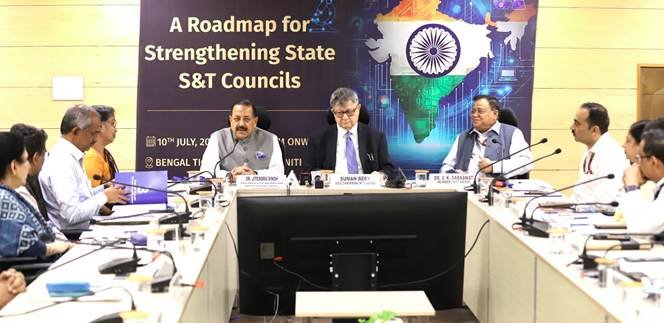High speed trains
Japanese Shinkansen-based train for India.
Indian Railways (IR) is working on a multi-pronged strategy for running of high speed trains (with a speed of 300 kmph+), semi high speed trains (with a speed of 160 kmph+ – 200kmph), running of existing trains with increased speeds and introduction of faster trains and faster train sets.
A high speed train (300 kmph+) has already been sanctioned on Mumbai – Ahmedabad high speed corridor with financial and technical assistance from Government of Japan. This train is based on Japanese Shinkansen high speed technology. A company for the implementation of this project with the name “National High Speed Rail Corporation Limited” has already been formed.
The implementation of this project has already begun and is now targeted for commissioning in 2023-24. The study for this high speed train popularly referred to as Bullet Train has been done by JICA.
Government of Japan is providing financial assistance in the form of loan upto 81% of the project cost at a very nominal interest rate of 0.1% per annum to be repaid in 50 years with a 15-year moratorium.
In addition to Mumbai – Ahmedabad high speed (300 kmph+) corridor, five more corridors covering sides of diamond quadrilaterals and semi diagonals in the country are being explored and Consultants have been appointed to undertake feasibility studies as per details given below:
High Speed Corridor and Consultants undertaking feasibility study
Delhi-Mumbai: Consortium of M/s. The Third Railway Survey and Design Institute Group Corporation (Chinese Consultant) and Lahmeyer International (India) Private Limited. Interim report 1 received. Interim report 2 expected in November, 2016. Final Report expected in January, 2017.
Mumbai-Chennai: Consortium of M/s. SYSTRA (French Consultants), RITES and Ernst and Young LLP. Interim report 1 received. Interim report 2 expected in November, 2016. Final Report expected in January, 2017.
Delhi-Kolkata: Consortium of M/s. INECO- M/s. TYPSA- M/s. Intercontinental Consultants and Technocrats Private Limited (Spanish Consultants). Interim report 1 & 2 received. Final Report expected in January, 2017.
Delhi-Nagpur: Government to Government cooperation with Chinese Railway Company. Inception report received.
Mumbai-Nagpur: Government to Government cooperation with Spanish Railway companies. Interim report 1 received. Interim report 2 expected in November, 2016. Final Report expected in January, 2017.
IR has also taken up a programme of running of semi high speed trains (160 kmph+ – 200kmph) in a big way. It has already started running such a train with the name Gatimaan Express between Hazrat Nizammuddin to Agra Cantt Station w.e.f. 05.04.2016 with a maximum speed of 160 kmph.
In addition to this Delhi –Agra semi high speed corridor, Indian Railways have also identified eight more corridors for feasibility of semi high speed rail, Zone wise details are as under:
Delhi-Chandigarh – Feasibility-cum implementation study awarded to SNCF (France) on cost sharing basis.
Chennai-Bengaluru-Mysore – Feasibility Study for upgradation of speed awarded to ERYUAN Group of Chinese Railways at their cost.
Delhi-Kanpur; Nagpur-Bilaspur; Mumbai-Goa; Mumbai-Ahmedabad; Chennai- Hyderabad; Nagpur – Secunderabad
Quantum of Technical inputs required for upgradation of speed to 160 Kmph have been identified by the concerned Zonal Railways and KONKAN Railway.
IR is also currently undertaking field trials for assessing savings in transit time by using special type Spanish Talgo Coaches on existing New Delhi-Mumbai corridor. These are faster trains which may run at around 200 kmph.
Indian Railways is also working on a proposal to acquire modern electrical EMU train sets which will have a good average speed thereby saving travel time substantially.
With a view to increasing speed of existing trains in Indian Railways, ‘Mission Raftaar’ has been announced in the Railway Budget 2016-17. The mission envisages a target of doubling of average speed of freight trains and increasing the average speed of all non-suburban passenger trains by 25 kilometre per hour (kmph) in next 5 years.
The present level of average speeds in Indian Railways for non-suburban passenger trains is 46.3 kmph and for freight trains the average speeds is 24.2 kmph. In order to implement this, a cross-functional mission directorate has been created in Railway Board.
Action Plan for improving mobility and increasing average speed of trains, inter-alia, includes removal of speed restrictions, construction of road over bridges (ROBs) and road under bridges (RUBs), right powering of trains, introduction of twin-pipe brake system in wagons, and replacement of conventional loco hauled commuter trains by Main Line Electric Multiple Unit (MEMU) and Diesel Electric Multiple Unit (DEMU) trains. fii-news.com











